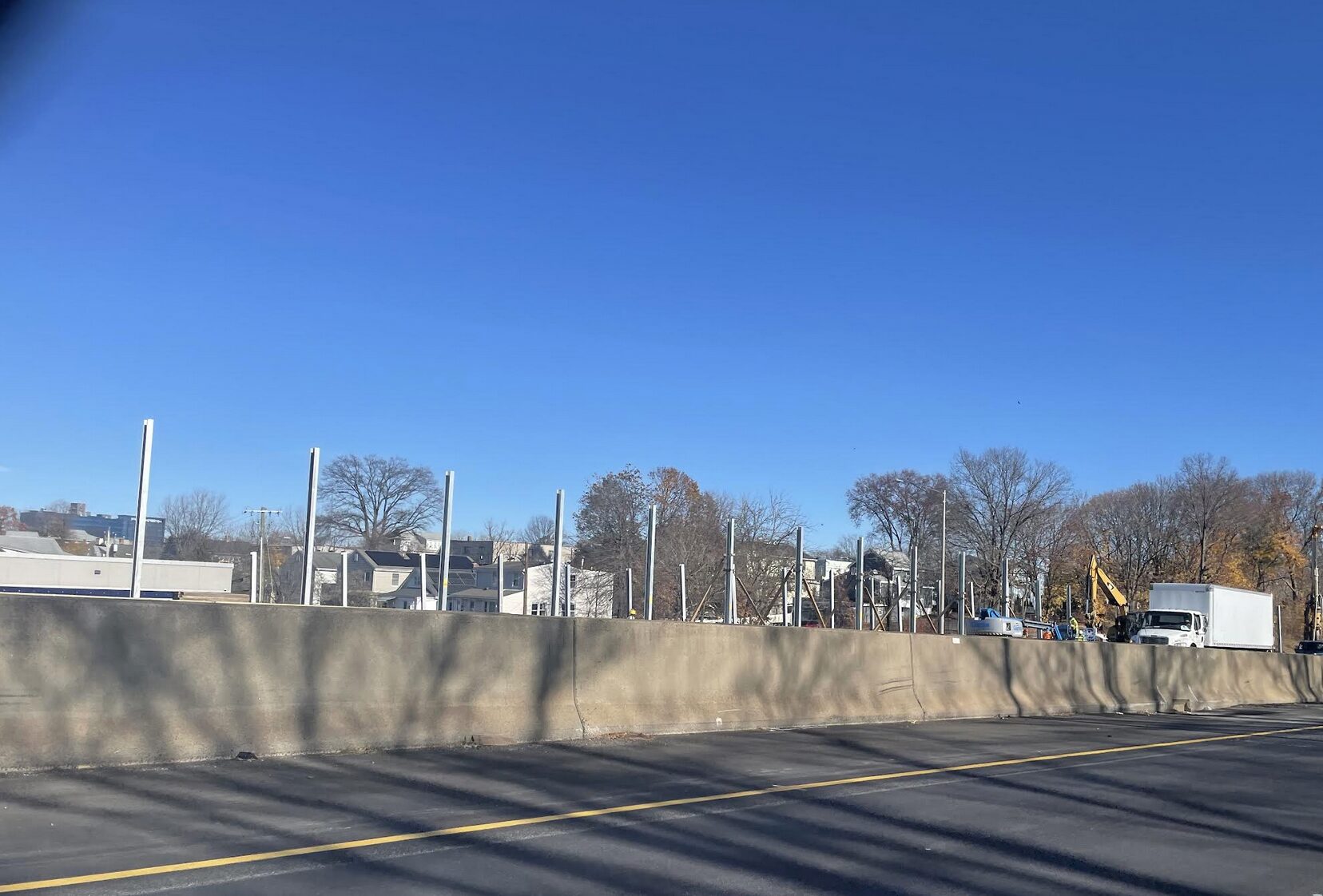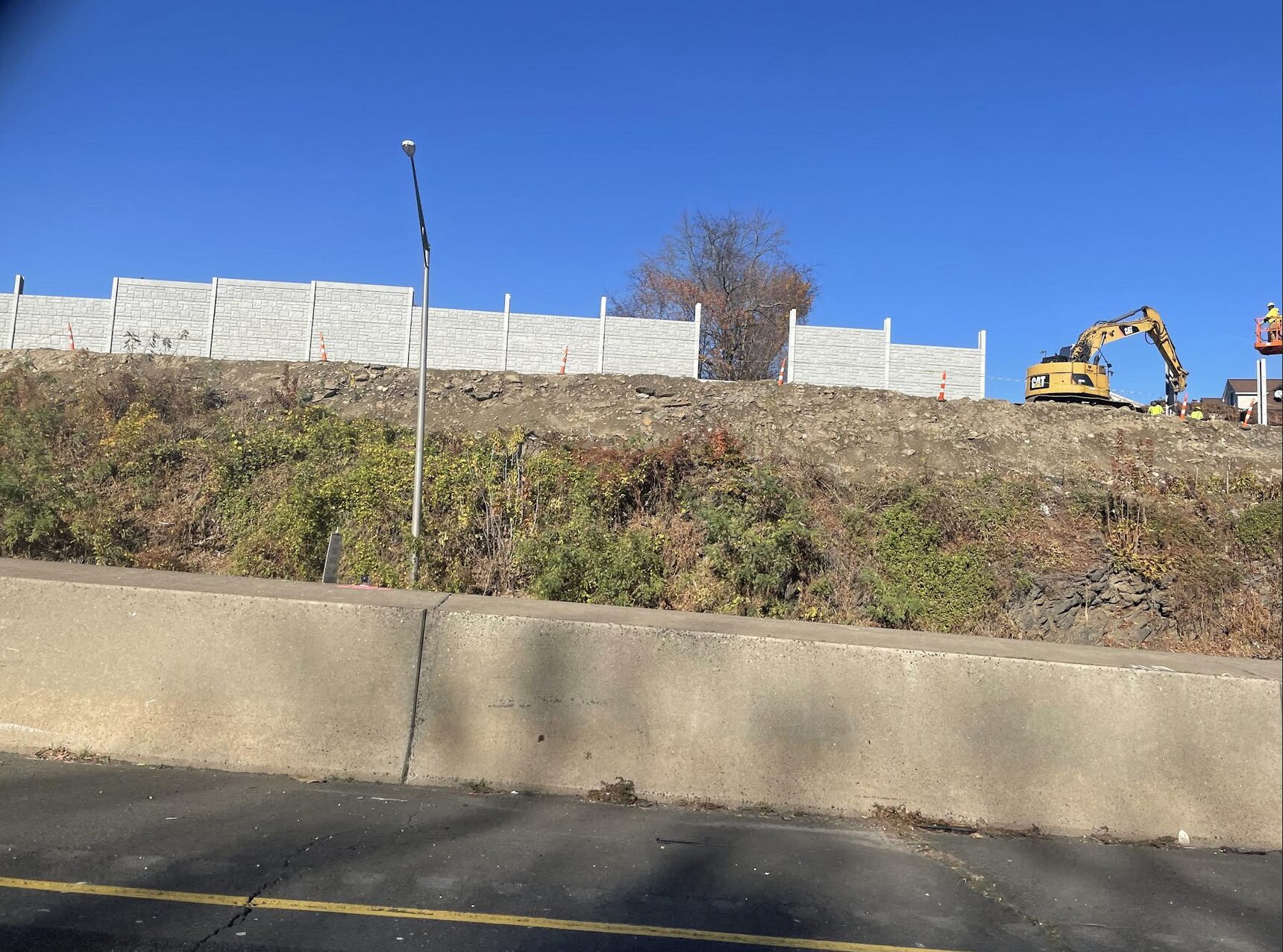Last week the CT Dept of Transportation and consultants from CDM Smith hosted a workshop about the Greenwich I-95 PEL study at GHS on Wednesday, followed by a Zoom meeting on Thursday.
PEL stands for Planning and Environment and Linkages.
Greenwich residents have been following progress closely, and during the Zoom meeting they were eager participants.
Questions about I-95 focused on the possibility of sound walls for noise mitigation.
The study also includes Route 1, and questions concerned both pedestrian and bike safety.
The PEL study has a project advisory committee that includes neighborhood associations, advocacy groups, transportation providers and officials from the Town of Greenwich.
On the 7 miles from the NY line to the Stamford, I-95 carries 135,000 vehicles per day and US Route 1 carries 17,000 vehicles per day.
Traffic data reveal that in the weekday peak hours in the morning about 49% of trips start prior to Stamford and continue through to NY, with most of the drivers exiting at exit 3 in Greenwich.
Northbound, during the weekday afternoon peak period, 58% of drivers continue along I-95 beginning in NY and ending beyond Greenwich, with exits 2 and 3 being the most popular exits.
The meeting hosts noted the worst congestion on US Rte 1 occurs on weekday mornings rather than the afternoon peak hour.
In five years of crash data (2018-22) for I-95, including ramps in the study area, there were about 2,800 crashes, split roughly evenly between northbound and southbound.
On I-95 where traffic entering via ramps doesn’t have enough space to get up to speed before merging with faster moving traffic, there is a correlation to both congestion and crashes.

Stamford Mayor Caroline Simmons, CT DOT Commissioner Garrett Eucalitto, US Congressman Jim Himes (D-CT 4th district), US Senator Richard Blumenthal, CT Governor Ned Lamont, State Rep Matt Blumenthal (D-147) and State Rep Rachel Khanna (D-149) and Donald Shubert who is president of the Connecticut Construction Industries Association at a groundbreaking at the I95 Exit 6 northbound on-ramp. Oct 25, 2024 Photo: Leslie Yager
Last month, elected officials including Governor Lamont broke ground on a $76 million auxiliary lane and safety project at I-95 exits 6 and 7.
That project includes sections of sound walls that are currently under construction.
Between now and 2050, both Connecticut and Fairfield County are anticipated to experience a 9% population growth and a 17% employment growth. Those facts will inform traffic projections.
In total, the study area includes 7 highway interchanges and many structures including the Mianus River Bridge, which many residents remember collapsed in 1983.
Route 1
The hosts said they were aware of the high number of pedestrians on Rte 1 and noted there were numerous “sidewalk continuity” issues. Also, they noted not all sidewalks are concrete; many are asphalt. And there are 26 side-street crossings that lack crosswalks.
Importantly, they noted there are no dedicated bike lanes on Rte 1 despite a portion of US Rte 1 being part of the East Coast Greenway.
Only 3 cross streets have bike lanes, and those pavement markings are worn and deteriorated.
Public Transportation
There are 4 train stations in Greenwich and, nearby Stamford’s train station has both Amtrak and Metro-North service. Many individuals use public transportation, given 4.3% of residents lack of vehicle access, a statistic that correlates with census tracks near downtown Greenwich as well as Stamford.
Going back to 2020, the most heavily utilized bus ridership route in the study area is route 311-Port Chester, with almost a half million riders.
Since the pandemic there has been recovery on the I-Bus Express 97 route that runs between downtown Stamford and White Plains having nearly doubled.
Rail ridership has recovered to about two-thirds of pre-pandemic levels in Greenwich.
Noise Assessment and Type 1 Criteria
The PEL study team are conducing a noise assessment of existing conditions and locations that exceed the noise criteria.
If Type 1 criteria are met, abatement or noise walls might be feasible and reasonable.
Type 1 projects include new highways, lane additions, new rest stops or weigh stations, or a widening that brings traffic closer to a “sensitive noise receptor.”
The presenters said they analyzed 1,598 residences within 500 ft of I-95 for noise.
Of those, 754 were predicted to experience noise levels that approach, meet or exceed the noise abatement criteria of 67 decibels, which is the federal threshold for predicted impacts in the build condition.

DOT and CDM Smith’s outreach on the PEL Study includes public meetings like the meeting on Thursday and the well attended on in Riverside in January. The next public meeting will be in 2025. There is also an interactive survey on the PEL study website here. Well attended presentation by the CT Dept of Transportation at St Paul’s Church. Jan 25, 2024 Photo: Leslie Yager
On Thursday Greenwich residents repeatedly asked about sound walls.
The meeting hosts explained that any potential sound walls would have to conform to the NEPA/National Environmental Policy Act and meet Type 1 criteria.
Anthony Moor asked how design criteria choices for pedestrian and bicycle improvements would be coordinated as part of multi-modal infrastructure.
Project Manager Jonathan Dean said the DOT had a newer Complete Streets policy, and that they would work closely with Greenwich DPW, the Town, and the public about multi-modal improvements.
“It will be a conversation, and we’ll make sure we understand any planned improvements and make sure we dovetail with the town’s vision within Greenwich,” Dean said.

A yellow school bus proceeds up the I95 exit six on-ramp headed northbound into traffic. Oct 25, 2024 Photo: Leslie Yager
Greg Piccininno from Riverside asked about extending on and off ramps on I-95 in Greenwich.
Scott Harley, regional team leader from CDM Smith, said based on initial analysis of acceleration and deceleration lanes between exit 2 and 6, they did not meet the minimum lengths for Connecticut’s DOT’s design criteria.
“We will be looking at alternatives for what it would take to have each of these on and off ramps meet current design standards,” Harley said.

Sound wall construction on I-95 in the area of exit 6 and 7. Nov 25, 2024 Photo: Leslie Yager

Sound wall construction on I-95 in the area of exit 6 and 7. Nov 25, 2024 Photo: Leslie Yager

Sound wall construction on I-95 in the area of exit 6 and 7. Nov 25, 2024 Photo: Leslie Yager
The noise walls under construction near exit 7 in Stamford were brought up. Hosts explained that reflected the auxiliary lane project there qualified as a Type 1 project, warranting that section of sound barriers.
The full noise study report will not be released until 2025, but there are detailed maps online that show locations where noise criteria exceeded or approached the noise threshold.
They said as projects are identified in the PEL process, they will determine what qualifies as a Type 1 project and then it would undergo the same process as in Stamford to determine whether it’s warranted.
They noted that beyond noise walls, berms and wider swaths of vegetation can also mitigate noise, but unfortunately, there is much right-of-way area in the Greenwich area.
Asked about the new pavement, the hosts said it was not the final surface, but rather an intermediate course. The SMA – stone matrix asphalt – will probably be completed next year.
Anthony Moor who is co chair of Greenwich’s Active Transportation Task Force, asked about prioritizing “quick turn, less extensive projects” rather than wait for 2026 study completion.
“Striping bike lanes could be done with a bucket of paint and a painter,” he suggested.
The answer was yes.
The hosts referred to “break out projects,” in addition to mid-term and long-term solutions. Also, the Dept of Transportation has a new, “quick build” policy that allow municipalities to apply to the state to carry out on their own. The hosts referred to low impact projects as “tactical urbanism.”
Vin DiMarco said Rte 1 lacked lane width for bike lanes and asked about taking property away in the state’s I-95 right-of-way to create an off-road multi-use path. DiMarco said that would help alleviate backups on Rte 1 and I-95.
The reply was that the idea was not ruled out, and they appreciated that feedback to consider.
Susan Foster from Riverside asked why there was no noise monitor placed on Lockwood Lane by J House Greenwich as part of the existing conditions noise analysis.
Bob Finck explained that the measurements are actually used to calibrate the noise model, not to provide predicted noise levels or potential impacts. However, he said the area next to the JHouse was selected as a measurement site and did show there were exceedances of the Noise Abatement Criteria (NAC).
“That’s truly what we’re trying to accomplish with this existing conditions noise analysis,” Finck said.
Foster asked why there was no monitor in the Eastern Middle School fields. Mr. Finck said they typically analyze within a 500 ft distance from the I-95 corridor and those fields are outside that distance.
Catherine Drake and Joe Pecora both asked if there were plans for a sound barrier to spare Byram residents from I-95 noise pollution, especially at night when they’re trying to sleep, and for New Lebanon School.
The reply was that it was too early to tell, and it would depend on whether a Type 1 project was identified. If so, a sound wall would be evaluated under the National Environmental Policy Act to see if one might be reasonable.
“There are no noise barriers planned for construction for this project as part of this phase,” Mr. Finck said. “However, that school and the recreational facilities around it are part of this study and have shown exceedances of the mitigating criteria at the existing levels.”
“When and if this project moves into a Type 1 project, barriers would most likely be evaluated at that location,” Finck said.
Nadine Habra said noise varied atmospheric conditions, including wind direction and time of year, and asked if that was factored into the noise model.
Mr. Finck said yes, they do evaluate the loudest hour of the day with a FHWA-approved traffic noise model, which is a digital software to evaluate the loudest hour of the day for an hourly average.
Ms Foster asked if modeling for future traffic levels anticipated apartment building projects. The reply was that they had contacted P&Z about any projects planned and approved as of fall 2022.
Still, they said they take into consideration the average growth rate based on a statewide model.
Anthony Moor asked about the DOT’s approach to bike usage.
“One of the reasons you may not see a lot of people riding bicycles on Rte 1 today is because it’s not very friendly for people with bicycles,” Moor said. “If you were to add the opportunity for people to ride bicycles on Rte 1, I think it goes axiomatically to the question of would people use it, and the answer is likely, yes.”
The hosts said when people complete the surveys, they’d appreciate feedback about why people don’t bike and where they would like to bike.
Members of the public are encouraged to submit comments, questions, and complete the survey during the 30-day public comment period that began November 6, 2024.
Please submit comments, questions, and complete the survey by December 6, 2024. Email [email protected] or call the I-95 Greenwich PEL Hotline at (203) 806-0804.

Riverside Association co-president Susan Foster; Jonathan Dean, PE, CT DOT; Becca Hall, PE, CDM Smith; and Marian Hull, AICP, CDM Smith at the DOT forum at St Paul’s Church in Riverside. Jan 25, 2024 Photo: Leslie Yager
See also:
Officials Break Ground on $76 Million Auxiliary Lane & Safety Project at I-95 Exits 6 and 7 Oct 27, 2024
Riverside Forum: DOT to Repave in April with New “Quiet Pavement,” Vows Collaborative Process for I-95 PEL Study Jan 28, 2024